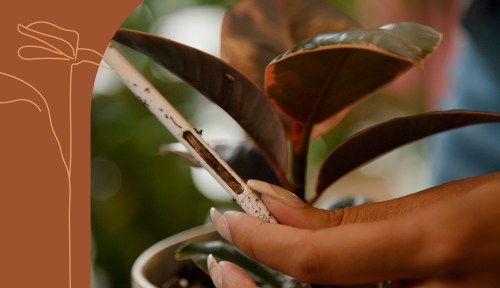Our editors independently select these products. Making a purchase through our links may earn Well+Good a commission
Let’s face it—if your plant is underwatered, there’s a good chance you simply forgot to water it. And just like your plants will tell you when they’re being overwatered, they will also let you know when they’re not getting enough much-needed H2O. But, what are the signals you should be looking for from your plant babies to let you know that this is may be the case? Plant doctor and stylist Maryah Greene says there are three key signs of underwatering plants.
Experts in This Article
plant expert and founder of Greene Piece
“There are a few common things that you’ll start to notice with your plant if you’re underwatering it,” says Greene in the latest episode of Greene Thumb by Well+Good, a series on the Well+Good YouTube channel. “You might see leaves starting to yellow, dry and crisp, and over time, they just might start to fall off,” Greene says.
“You might see leaves starting to yellow, dry and crisp, and over time, they just might start to fall off.” — Maryah Greene, plant doctor
Of course, different plants have different needs regarding how much water they get, and in order to maintain the health of yours (and avoid underwatering), Greene says it’s important to stick to a consistent watering schedule. Learn how often your plant likes to be watered, how much water it likes to get, create a schedule, and then make sure you stick to it. From there, it’ll be easier to know when your plant is in need of water before it starts to shed its leaves.
Beyond a watering schedule, you can also anticipate your plants’ needs by testing its soil. One way to check is the finger test: Just take one or two fingers and poke into the top inch or so of the soil. “When you take your finger out of the soil, ideally, the soil is dry when it’s on your finger, and that might mean it’s time to water,” says Greene. “However if you pull your finger out and the soil is moist and sticking to your finger, that means wait a couple of days before you water it again.” For larger plants, it’s worth investing in a soil probe ($25) or moisture meter ($10) which allow “you to go a little bit deeper and figure out how moist your plant is at the bottom of the pot,” says Greene.
If you’re still worried that you’re missing signs of underwatering plants, Greene says making sure your watering can is an appropriate size can help. “One of the things I often tell my clients is you want to find a watering can that’s similar in size of volume to the pot that you’re watering,” she says.
Furthermore, as the seasons change, your home can get darker or lighter, warmer or cooler, dryer or more humid, which can all impact how much you water your plant. “Things such as lighting, whether or not you can control your AC or heat, and where the plant is positioned in your home, makes a huge difference,” says Greene.
For more on underwatering, watch the full video above. And be sure to subscribe to the Well+Good YouTube channel for more tips.
Oh hi! You look like someone who loves free workouts, discounts for cult-fave wellness brands, and exclusive Well+Good content. Sign up for Well+, our online community of wellness insiders, and unlock your rewards instantly.
Sign Up for Our Daily Newsletter
Get all the latest in wellness, trends, food, fitness, beauty, and more delivered right to your inbox.
Got it, you've been added to our email list.










